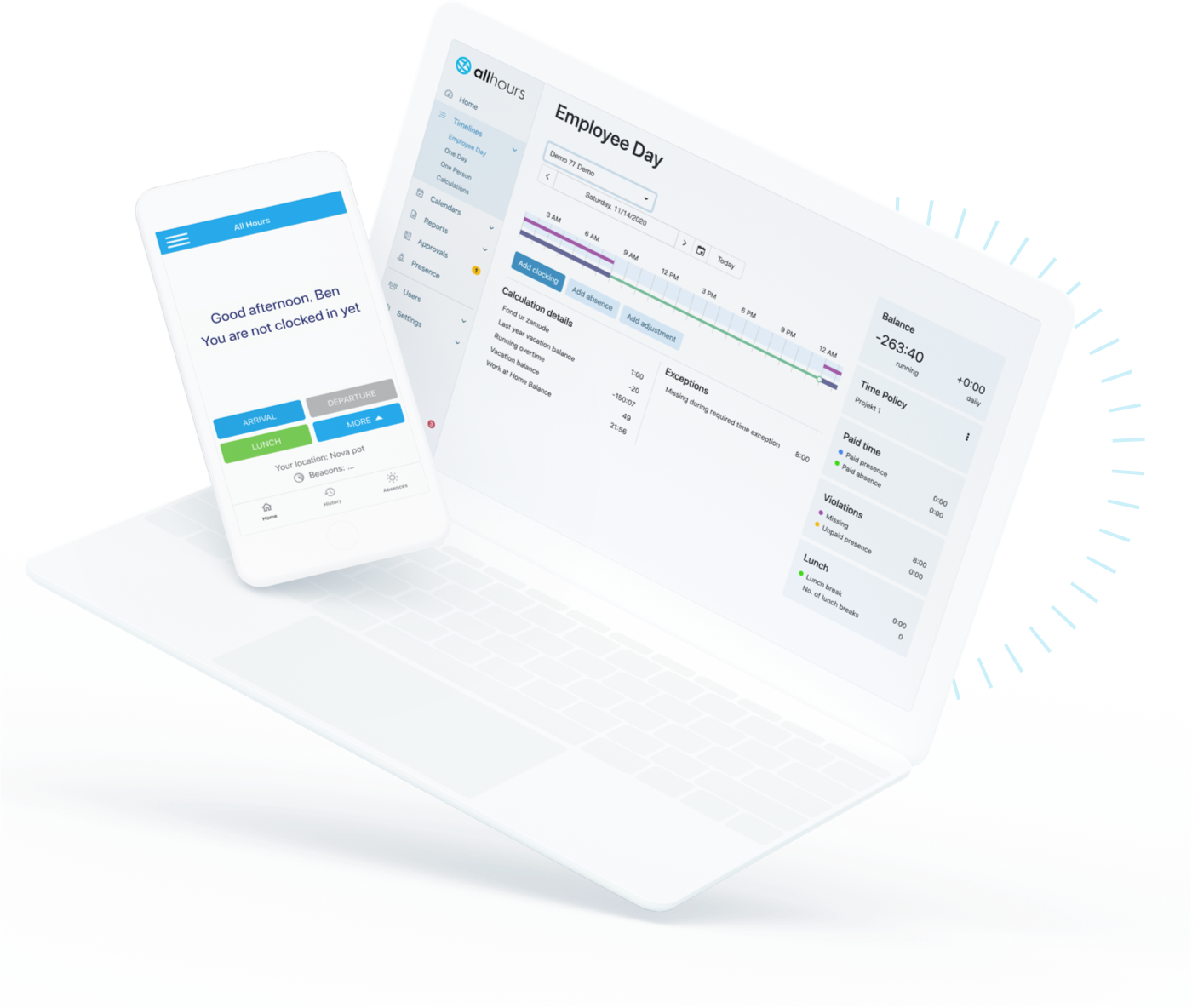

Flexible work has become a new standard all over the world, especially for creative jobs and those that add high-value, be it through formal flexible work policies, or otherwise.
Many employees, for example, have an arrangement with their managers to work from home once a week, or even to leave early for personal reasons and make up that time in the evening hours. These exceptions make the case for companies to formalize their flexible work arrangements.
If, as a manager, you keep these arrangements “under the table” and not as formal policies that all employees can benefit from, then this can lead to feelings of inequality and cause tension among employees who aren’t granted the same privileges.
This blog will guide you through the basics of implementing a flexible work policy and what you should consider at the very beginning of this process. You will also get an insight how a time and attendance tool can help you with successfully implementing a flexible work policy.
If you want to successfully implement a formal flexible work policy, you have to start with the right set of questions. There are two basic questions to start with:
Answering this question will help you decide on the right form of flexible work. Not all flexible work arrangements are suitable for all companies, so before weighing any options you need to think about what you are looking to optimize by implementing a flexible work policy.
Then, pick an arrangement accordingly. For example, remote work can help you cut down on real estate costs by downsizing office space, but that doesn’t mean it’s right for an organization that mainly works face-to-face with customers.


Cancel anytime - no credit card required.
There are five “dimensions” of flexible work, which can be included in your flexible work policy. These dimensions are:
1. Remote work
If you want your employees to save on commuting time and costs, offer them remote work. There will be fewer parking spots needed and you will lower your carbon footprint.
You can even cut down on real estate costs if you downsize your office space. Employees gain greater autonomy and experience fewer interruptions, which tends to lead to increased productivity and a better work-life balance.
2. Job sharing
With job sharing you can get more diverse skills and experience in the same position. Having two people work on the same task enhances problem-solving and makes managing heavy workloads easier.
Job sharing is also useful in terms of continuity and coverage of work during absences. Employees get more free time, while still keeping their careers on track.
3. Part-time work
By offering the option of part-time work, you can attract applicants from a wider employment pool and retain valued employees who may not be able to, or want to, work full-time.
Employing part-time workers can help you cover busy periods efficiently. This is also a good way to reduce costs without reducing staff.
4. Compressed schedule
A compressed work week is perfect for balancing high peak workloads, because it lets you increase the total staff hours during the peaks, and extends the operational hours of the workplace.
A compressed schedule also helps reduce commuting time and costs and affords employees an additional day off and a better work-life balance.
5. Flexitime
Flexitime offers a better fit of working hours with school hours, college hours, or care arrangements. Commuting to work becomes faster and easier because employees can avoid rush-hour traffic.
With flexitime, you can also extend office hours and allow clients to contact your business later or earlier than usual.
New ideas & best tips
Implementing a new policy is always multidimensional. Make sure to consider every aspect of your business which will be affected by the new flexible work policy.
You need to consider how it will affect your employees, as well as your clients, your HR department and your management structure:
Firstly, you will need to identify possible options, and try to figure out what it is your staff needs. Consulting at an early stage will help to uncover individual needs and interests, and help anticipate difficulties.
Ask your employees what they want from a flexible work policy. Conduct surveys and/or focus groups and encourage informal discussions.
If your colleagues know that their opinions matter, they may suggest innovative options that are not in general use, but may be just right for your organization or a particular work unit. Involving your team also helps to get them on board with the program.
Don’t be afraid to reach out for advice and comments from other organizations, clients, and board members. People love to expose what worked particularly well for them, be it a progressive and complex remote work arrangement or just a simple trick.
For instance, in our company, we moved all of our longer meetings to after 2 pm, as they used to take up a lot of time in the mornings.
We later found out that this is actually a common problem with IT companies, especially since there is a tendency to introduce daily morning stand up meetings that can quickly get out of hand and last till noon. Our colleagues from different companies loved our simple rule of moving every meeting until after 2 pm.
After you’ve done your research, consulted with your employees, and decided on which options to offer in your flexible work policy, make sure to run a pilot for a trial period and evaluate it with each employee individually.
It may be best to run the pilot program in a particular team or department before including your entire company.
In the case of smaller businesses with less than 20 people, you will have to include everyone from the get-go. Have employees report on the pilot and provide their feedback. Make modifications or changes to the program accordingly.
Just make sure you always inform your staff of any new processes or guidelines.